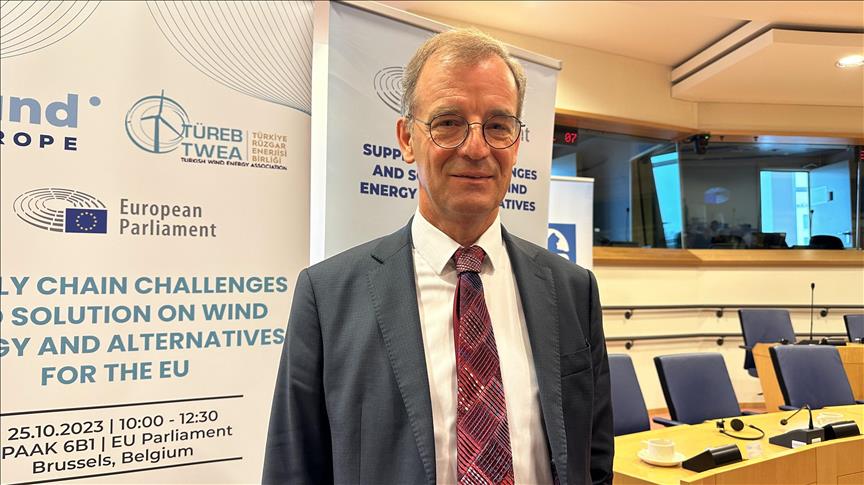

By Anadolu Agency
Europe’s wind industry needs a level playing field to maintain independent supply chains in response to the US and China’s heavy wind sector subsidization, Enercon’s CEO said.
Jurgen Zeschky, in an interview with Anadolu, argued that original equipment manufacturers (OEMs) are needed in Europe to compete against the US and China, which heavily subsidize wind turbines.
“From a wind turbine OEM perspective, what we are asking is a level playing field. US and China heavily subsidized turbines. In order to maintain the wind industry and independent supply, we need a level playing field,’ he said.
He added that the diversification of supply chains is a must, given that Europe is heavily dependent on China for equipment and raw materials.
‘Today, supply chains, I would say, are back to normal. They are not as disruptive as they used to be. But we all heavily depend on China. The situation with Russia in natural gas supply was a really wake-up call in Europe for creating an independent energy supply,’ Zeschky said.
According to the International Energy Agency’s (IEA) flagship report, World Energy Outlook 2023, supply chains for clean energy technologies and critical minerals are highly geographically concentrated. Diversified investment to meet growing demand can help, but international collaboration will also be required.
The world is expected to rely on China for 79% of solar PV output by 2030, with wind accounting for 64% and batteries accounting for 68%. The rate of reliance on China for lithium compounds could be 54%, 26% for electrolyzers, and 72% for refined cobalt.
In the European Commission’s European Wind Power Action Plan announced last week, the plan aims to help maintain a healthy and competitive wind energy supply chain by securing a pipeline of projects attracting the necessary financing and competing on a level playing field globally.
‘Financing costs are among the challenges that we are facing. The interest rate is a significant factor in financing projects. Securing available finance and funds at a reasonable cost is one of the things that will help the wind industry and also the supply chain,’ Zeschky said.
This is more pertinent with the 20% rise in the cost of wind turbines per megawatt-hour due to increased raw material costs like steel, copper and aluminum driven by unforeseen circumstances like the COVID-19 pandemic and the war in Ukraine.
‘It is hard to believe that commodity costs will go down. This is really the major factor in the increase in wind turbine costs. Personally, I believe the costs will be more or less at that level. There will be some efficiency gains in design and cost reduction, but it will remain at these levels because it is driven by commodities,’ he noted.
– Plans to increase equipment manufacturing and supply in Türkiye
Zeschky, speaking on Enercon’s Turkish operations, stated that significant components such as blades, generators, and towers of the company’s EP3 type turbine are made in the country.
Plans are afoot to manufacture major components for the latest turbine models in Türkiye also, and to this end, he said the company will be working to secure local partners in the next few years to build up the sourcing footprint for the latest turbine model and the installation of new stock in the country.
Enercon is currently sourcing about €300 million worth of components from Türkiye, an amount that Zeschky expects will rise over the coming years to about €500 million.
‘This is what we see in the foreseeable future with the order backlog we have, but also the orders we see on the horizon. Türkiye can offer labor and attractive cost levels. It is an attractive partner both in the market and in terms of sourcing. I would also regard Türkiye as very close to Europe,’ he said.
Arif Gunyar, the regional head of Central Asia, the Middle East and Africa at Enercon, also noted that, as a pioneer of the Turkish wind industry, the company has been sourcing and manufacturing numerous components of various turbine models for more than 20 years in Türkiye.
The company has 2.6 gigawatts of installed wind capacity in Türkiye, Gunyar said, adding that the project management, maintenance, service and all related engineering works are also executed by strong and experienced operational local teams.
We use cookies on our website to give you a better experience, improve performance, and for analytics. For more information, please see our Cookie Policy By clicking “Accept” you agree to our use of cookies.
Read More